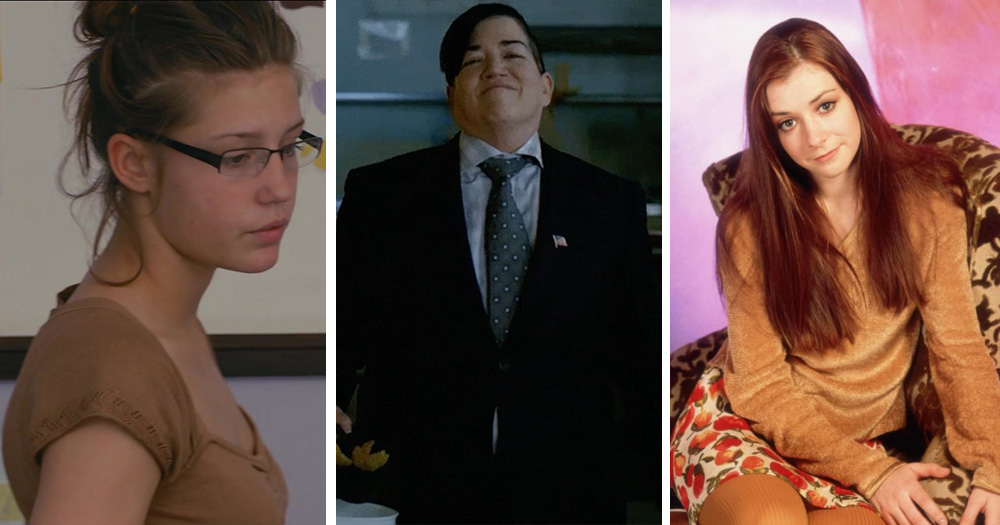In recent years, lesbian representation on screen has slowly improved, but significant gaps remain. According to GLAAD’s 2023/24 report, only 8.6% of characters on primetime scripted broadcast TV were LGBTQ+, and just 24% of those were lesbian. Even more striking is the lack of racial and body diversity, with over half of all characters still being white. While we’ve made progress since the days when lesbian characters were reduced to villains, there’s still a long way to go. How lesbians are portrayed on screen shapes public perception and self-identity. For Lesbian Visibility Week, we take a closer look at some of these representations.
Lesbian stereotypes are sometimes shaped in opposition to traditional femininity. One such example is the butch lesbian, who is characterised by short hair, masculine behavior, and an approach to women that mimics heterosexual male dynamics, for instance, Big Boo in Orange Is the New Black, who frequently jokes about “being like a man.”
Walkin’ into Season 5 like: pic.twitter.com/PpYuJ1epXp
— Orange Is the New Black (@OITNB) May 9, 2017
On the other hand, recent years have seen feminine lesbians begin to replace the butch archetype, conforming more closely to heteronormative standards. For example, in The L Word, most of the main and supporting cast fit a homogenised, white, thin, feminine ideal. Many of the couples on the show follow a “femme/femme” aesthetic. This ends up associating lesbianism with conservative, white, middle-class ideals of femininity, and marginalises other lesbian identities that don’t fit into patriarchal, heteronormative standards.
Not only are lesbians underrepresented in their full diversity, but they also suffer from recurring tropes on screen. One common way to limit positive lesbian representation is by dehumanising the characters, often through their deaths or the construction of unsympathetic, villainous personas. The ‘dead lesbian’ trope dates back to the 19th century, when writers included LGBTQ+ characters only to kill them off, avoiding backlash. These stories often involved a couple finally confessing their love, only for one of them to die soon after.
According to Autostraddle, from 1976 to 2016, there were 1,586 shows with straight characters and only 193 with lesbian or bisexual characters in American scripted television. Of those 193 shows, 68 featured the death of a lesbian or bisexual character. For comparison, only 12 of those shows featured the death of a male character of equal narrative importance. This reinforces the idea that lesbian representation is dispensable on screen.
(Spoiler alert) In Buffy the Vampire Slayer (Season 6, Episode 19), Willow’s girlfriend Tara is shot by a stray bullet just after their first on-screen love scene. In The 100, the relationship between Clarke and Lexa was built with nuance and care, keeping fans engaged. However, this ends abruptly in Season 3 when Lexa is killed, not for narrative necessity but seemingly for shock value.
Most of these representations are also filtered through the male gaze. While we might expect lesbian characters to escape this, they often do not. This can have harmful consequences for young lesbians who internalise unrealistic or unhealthy portrayals of relationships.
Take the film Blue Is the Warmest Colour, where an extended sex scene between the two women feels more voyeuristic than authentic. The L Word has also been criticised for pandering to the male gaze. Lesbian characters are frequently portrayed as available for men, either invited into sex scenes directly or objectified through the screen. Moreover, many of the characters are heterosexual-passing, which reinforces this male-centred framing. Unfortunately, there hasn’t been much progress since the early 2000s in the mainstream.
While we’ve seen an increase in lesbian characters on screen, many exist only to draw in more viewers or to signal progressiveness, what we might call tokenism. These characters often rely on stereotypes and lack depth. This is the case in ABC Family’s The Fosters, where diversity seems more like a branding tactic than a meaningful commitment, leaving audiences disillusioned.
While this overview of lesbian representation on screen might paint a frustrating picture, it’s important to acknowledge that change is happening. Independent filmmakers, queer creators, and grassroots platforms are beginning to reclaim lesbian narratives, offering complex characters. True progress means not just increasing the number of lesbian characters on screen, but allowing them to exist fully: outside the male gaze, outside tokenism, and beyond tragic endings.
To end on a more joyful note, I’d advise you to watch Desert Hearts. Celebrating its 50th anniversary, this groundbreaking film remains a beautiful and tender example of lesbian love on screen, one that offers the kind of storytelling we need more of. Another great example is The Watermelon Woman by Cheryl Dunye, which was the first feature film directed by a Black lesbian.
© 2025 GCN (Gay Community News). All rights reserved.
Support GCN
GCN is a free, vital resource for Ireland’s LGBTQ+ community since 1988.
GCN is a trading name of National LGBT Federation CLG, a registered charity - Charity Number: 20034580.
GCN relies on the generous support of the community and allies to sustain the crucial work that we do. Producing GCN is costly, and, in an industry which has been hugely impacted by rising costs, we need your support to help sustain and grow this vital resource.
Supporting GCN for as little as €1.99 per month will help us continue our work as Ireland’s free, independent LGBTQ+ media.
